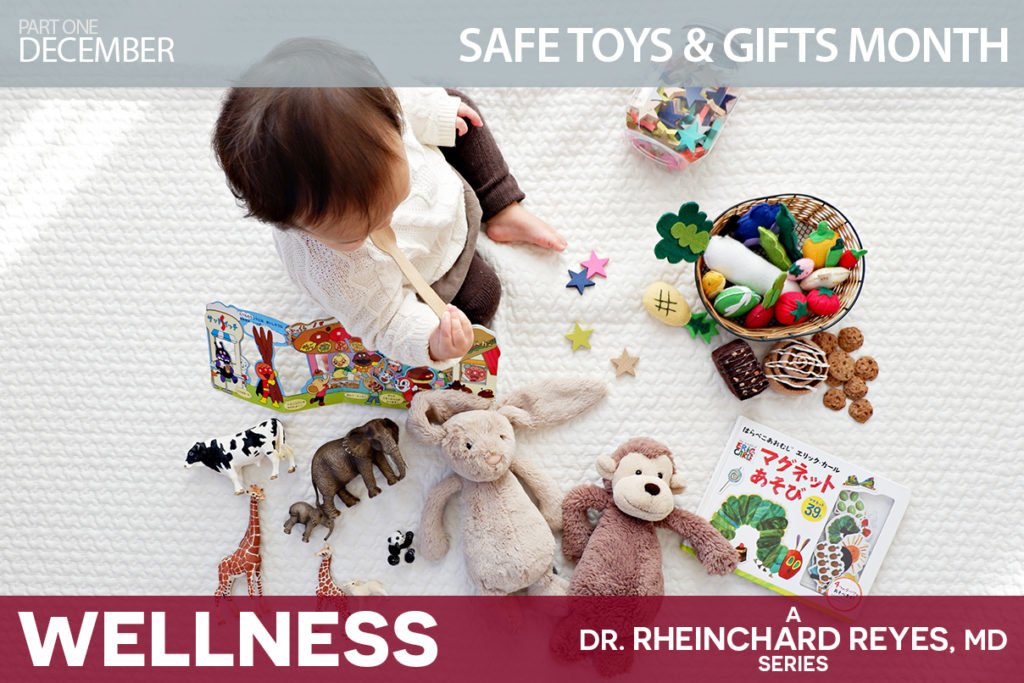Christmas holidays are but a stone’s-throw away. If you have little ones around the house, this is truly an exciting time of the year. Not only will they be roused up with the notions of fantastical characters that visit your homes in the middle of the night —say, down a chimney shoot, even if it’s just figuratively— but you get to spectate and guide their anticipation for all the gift-giving. Toys are ever important, that is why December has been declared National Safe Toys and Gifts Month.
The U.S. Consumer Product Safety Commission (CPSC) recently developed a sound toy safety system that required testing by independent labs worldwide. They imposed harsh standards and put an end to dangerous toys before they ever reached the young ones. This may be the perfect moment to review what hazardous parts or toys should be a warning sign to all parents and how to shop smart and exercise the necessary precaution.
Choking & Toy Hazard Stats
- Causes of toy-related deaths: choking, drowning, suffocation, and toy riding.
- In 2017 alone, 251,700 toy-related injuries were treated in ERs nationwide.
- A US child chokes to death every 5 days.
- Among these fatalities, 75% occur to children under the age of three. This makes choking a leading cause of death of infants and toddlers, not only in the US, but globally, because they tend to put everything into their mouths.
- Riding toys accounted for seven of the 13 deaths reported in 2017.
- Over 40K under-13 children —72 percent were 4 or younger— were rushed to the ER for injuries from batteries between 1997 and 2010. Fourteen died. These figures grew exponentially every four years, quadrupling over the last four-year period as batteries became ever-present in electronic toys.
Mindful Safety Tips during the Holiday Season
- Balloons account for 50% of all chocking-related fatalities in children of all ages. Discard deflated and broken balloons ASAP, as children can easily suffocate on latex balloons. If you want to include balloons in your holiday festivities, consider Mylar over latex.
- Small Toy Parts, including balls: Avoid toys with small parts altogether if you have children aged three or younger. As a rule of thumb, parts should exceed the width of a toilet paper roll (1¾ inches). If a toy fits inside a toilet paper roll, DO NOT buy it!
- Riding toys, including scooters, skateboards, and in-line skates are fast. Falls can be very dangerous, even deadly. Safety gear including helmets should be sized to fit and must be worn at all times.
- Magnets: Increasingly popular magnet sets are dangerous. They must be kept away from children of all ages, especially toddlers, should they carry small magnets, as they pose a serious choking hazard.
- Batteries: They are a leading choking and thermal hazard, specifically in the case of small lithium cell, aka, button batteries, and chargers, respectively. Follow instructions on chargers carefully. Charging should be supervised. All loose batteries should be packed and locked away well out of reach. Battery compartments should be taped over. Finally, discard used batteries safely.
Sources:
https://child-familyservices.org/december-is-national-safe-toys-and-gifts-month/
https://babygooroo.com/articles/10-most-common-choking-hazards
https://www.cpsc.gov/content/toy-hazards
https://www.cpsc.gov/s3fs-public/Toy_Report_2018.pdf?qIO1DVoYhV6lzYgcLa04K28yF28BOgdS


